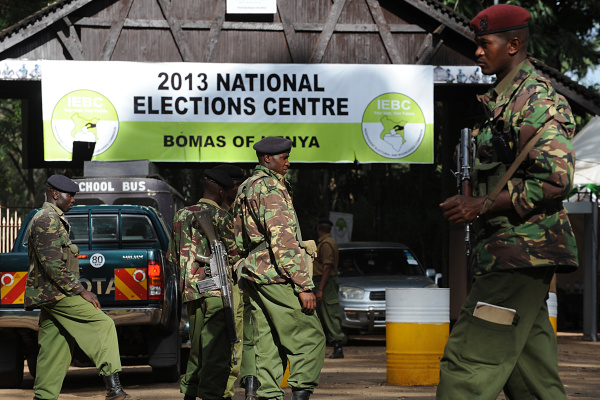Kenya: The Supreme Court has been told of how results from certain constituencies differed from those announced at the main tallying centre at Bomas of Kenya.
Africa Centre for Open Governance (Africog), who are parties to the case that is challenging the presidential elections results, urged the court to invalidate the results as electoral malpractices had been committed.
The organisation maintained that the presidential results that were announced at various counties were different from those declared by the Independent Electoral and Boundaries Commission (IEBC) at the national tallying centre.
In an eloquent presentation made by lawyer Kethi Kilonzo, Africog narrowed down to Nyeri and Bomet County tallying centres to prove that the results of the presidential elections were indeed altered.
Kethi played video clips of the announcements of the presidential results in the two counties, which she said was different from those finally announced by the Issack Hassan-led commission and reflected in Form 36.
She said for example that after the vote count, President-elect Uhuru Kenyatta garnered 317,881 votes from Nyeri County, which was announced by the county returning officer.
However at the Bomas of Kenya, the IEBC gave Uhuru 318,880 votes, which is an increment of 999 votes.
However, CORD presidential candidate Raila Odinga who scored 6,075 votes as announced at the county level had his votes reduced to 5,638 according to results announced by the IEBC.
“He (Raila) is not the only one, (James ole) Kiyiapi lost votes, (Martha) Karua lost votes, Musalia Mudavadi lost votes. Even the little that you have would be taken away from you. The only candidate who then benefited from this difference is the President-elect and Peter Kenneth,” maintained Ms Kilonzo in her submissions yesterday.
Kilonzo also said in Othaya constituency, Uhuru garnered 42,431 votes, which were inflated at the Bomas of Kenya to 42,957.
“My lord if you have 291 Constituencies and you give a candidate only a 100 votes more, the declaration of the President-elect would not look the way it is today,” she submitted.
She also poked holes in the IEBC register of voters insisting that it was inaccurate and not a reflection of the principal register published before the election.
Rejected votes
According to her, Form 36 obtained from the electoral commission showed that the number of registered voters stood at 13,557,365.
She, however, maintained that the principal register published by the IEBC on February 18 had 14,352,533 registered voters.
“My lords if one person outside that principal register was allowed to vote, they disenfranchised the Kenyan voters who came out to register as voters,” Kilonzo said.
She also faulted the electoral commission for having different registered voters for parliamentary and presidential elections in different parts of the country.
Giving the example of Makueni County, Kilonzo pointed out that the number of registered voters for presidential election stood at 64,525 while that of voters registered to elect MPs was 64,976.
She maintained that according to the Election Act, for one to take part in presidential election, one must be registered to vote in a parliamentary election. She said according to Article 86 of the Constitution, whatever voting method is used, it must be verifiable, simple, accurate, accountable and secure as enshrined in the law.
